Hanging Out with Christopher Columbus, the Oversized Diva
From down on the ground, if you didn't know what it was, it might be hard to figure it out. Given the massive amounts of scaffolding, the big structure currently occupying the middle of Columbus Circle looks basically like a construction project with nifty yellow signs attached. It's actually the Pu
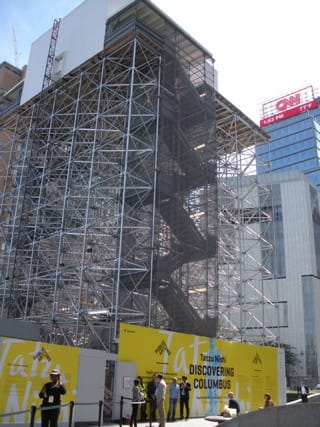
From down on the ground, if you didn’t know what it was, it might be hard to figure it out. Given the massive amounts of scaffolding, the big structure currently occupying the middle of Columbus Circle looks basically like a construction project with nifty yellow signs attached. It’s actually the Public Art Fund’s latest project, “Discovering Columbus,” by Japanese artist Tatzu Nishi.
For the project, Nishi has topped 70 feet of scaffolding with an artificial living room, which is furnished with such typically bland American trappings as taupe chairs and a rug, a plum couch, and a flat screen TV. At the center of the living room is a black coffee table, and at the center of that, seeming to rest on the table, is a giant, 13-foot marble statue of Christopher Columbus.

But let’s start at the beginning. First, you must receive a timed entry ticket. Then, you must sign a waiver. After that, you climb six flights of stairs, during which time you may peek through the thicket of scaffolding to glimpse the column that forms most of the very tall (more than 75 feet high) Columbus monument, which is topped by the statue of the explorer in the room upstairs. The entire monument was designed by Italian sculptor Gaetano Russo and unveiled in 1892.

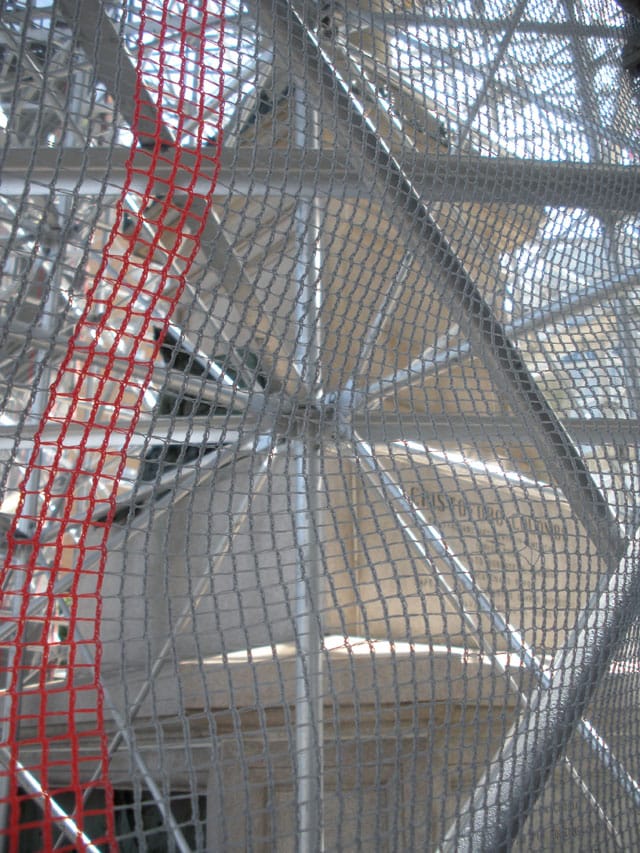
When you at last arrive at the top, you are greeted by a small hallway/foyer, which is wonderfully clever on Nishi’s part because it creates a sense of scale. If there aren’t any people in sight here, you could easily picture them milling about, maybe drinking cocktails before or after a dinner party in an imaginary adjacent dining room.

But then you proceed ahead a few steps, turn to your right, and there he is — Columbus, larger than life and commanding an utterly plain, lifelike room. It’s hard not laugh; I did. And not out of derision, but because it’s really just funny. His grandiosity makes the room seem silly. Columbus has never been either so accessible or so out of place.
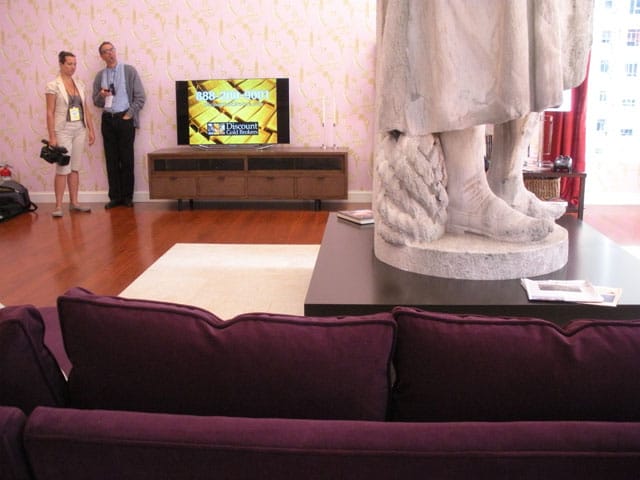
And yet, there’s a way in which Columbus fits his surroundings perfectly. The living room, as Nishi has decorated and arranged it, is for the most part a carefully cultivated model of tasteful tastelessness. Save for the quirky wallpaper, it conforms to our expectations of middlebrow luxury, trying so hard to be classy that it ends up uninteresting. One of the photographers who visited at the same time as me remarked that it felt like a setting in a James Bond movie, and I think he was onto something: the room is a parody of itself.
In much the same vein, what we discover when we have a chance to view Russo’s sculpture up close is that his Columbus is sort of a parody, too. He’s affected, trying hard, with his showy pose, to look like a fearless explorer. I couldn’t help but think he looked like an oversized diva.
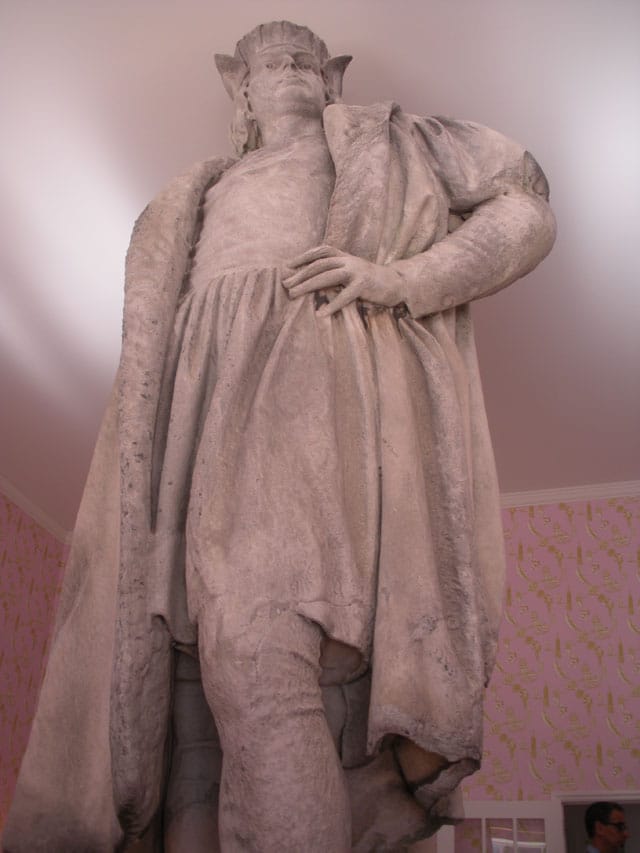
Of course the beauty of the project is that none of these thoughts and postulations would be possible without the room itself: it creates the conditions that render its own presence sort of ridiculous. So after all that thinking, it’s probably best to spend the next twenty minutes of your allotted time simply sitting in a plush chair and hanging out with Christopher Columbus. You could also look out the windows and over the outside railing to admire the wonderful views that Nishi has created for us.
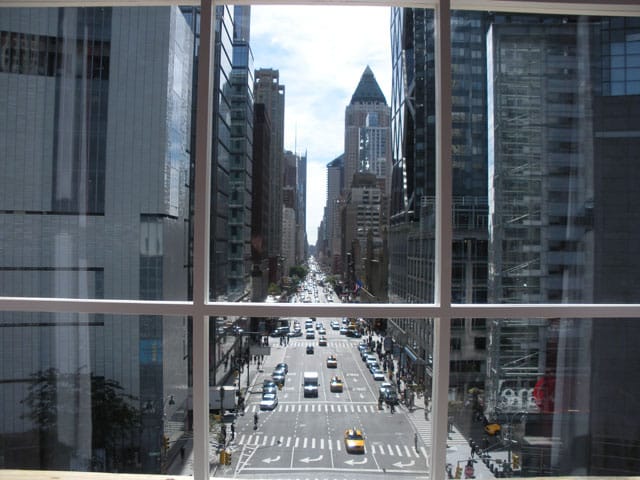
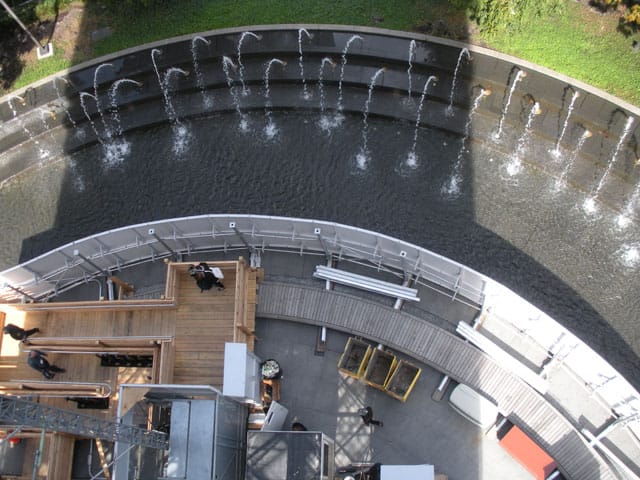
After I had descended, I crossed to the other side of Columbus Circle and turned back for one last look. Rather than only seeing the scaffolding now, I noticed the neat white box of the living room perched on top. If there’s one critique to be made of “Discovering Columbus,” it’s probably that the domestic setting softens Columbus too much, to the point where his troubling legacy is either ignored or forgotten. Nishi might have included some alternative historical accounts among the reading material on offer upstairs (although I’m not sure if visitors are allowed to remove books from the bookshelf). Otherwise, though, the artist and the Public Art Fund have done delightfully just what these sorts of projects should: found a way to bring the public closer to public art.

Tatzu Nishi: Discovering Columbus is on view at Columbus Circle (West 59th Street and Eight Avenue) through November 18. Tickets are required but free. More information is available here.




